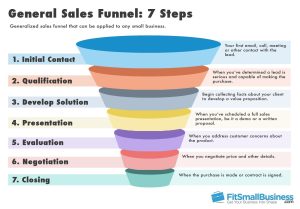
In today’s digital age, having a mobile-friendly website is essential for businesses looking to reach and engage with their target audience. With the increase in smartphone usage and the ever-growing number of mobile internet users, optimizing your website for mobile is no longer an option but a necessity. In this article, we will explore some effective strategies to create a mobile-friendly website that delivers a seamless user experience.
1. Responsive Web Design (RWD)
One of the most crucial strategies for achieving mobile-friendliness is adopting a responsive web design. This approach allows your website to adapt automatically to different screen sizes and resolutions. Implementing RWD ensures that your content remains easily readable and user-friendly across various devices, whether it’s a smartphone, tablet, or desktop.
To create a responsive design, utilize flexible grids, images, and CSS media queries. This will allow your website to adjust the layout, font sizes, and other elements based on the user’s screen size, providing a consistent and optimal viewing experience.
2. Simplify Navigation
Mobile users often have limited screen space, making efficient navigation an essential aspect of mobile-friendly websites. Simplify your navigation menu by using a hamburger icon that expands into a dropdown menu. This approach will streamline the mobile browsing experience and ensure that users can easily find the information they need.
Additionally, arrange your content in a logical hierarchy and use clear and concise headings. By employing a hierarchical structure and providing an easy-to-use search function, users can quickly locate the desired content, minimizing frustration and improving overall user experience.
3. Optimize Page Load Speed
Mobile users expect fast-loading websites. Slow page load speeds can lead to high bounce rates and a negative impact on search engine rankings. Optimize your website’s performance by minimizing file sizes, compressing images, and leveraging browser caching. These techniques will decrease load times, ensuring that visitors stay engaged and satisfied with your website.
Consider using a Content Delivery Network (CDN) to serve your website’s content from servers closer to the user’s location. This reduces latency and speeds up the delivery of your website, especially for visitors accessing it from different parts of the world.
4. Prioritize Mobile-First Content
When planning and designing your website, adopt a mobile-first mindset. Begin by focusing on creating content and features specifically tailored for mobile users. This approach ensures that your site offers a seamless experience on mobile devices without sacrificing functionality on desktop platforms.
Remember that mobile users have different needs and behaviors compared to desktop users. Keep the content concise, prioritize the most important information, and make it easily scannable. Avoid using long paragraphs, and instead, break the content into smaller sections with headers and bullet points to enhance readability.
5. Test and Optimize
Regular testing and optimization are crucial for maintaining a mobile-friendly website. Use tools like Google’s Mobile-Friendly Test to check how well your site performs on mobile devices. This test provides valuable insights and suggestions to improve your website’s mobile performance.
Pay attention to user feedback and analytics to identify areas requiring further optimization. Continuously evaluate your website’s performance and make necessary adjustments to ensure an exceptional mobile user experience.
Conclusion
In an increasingly mobile-centric world, creating a mobile-friendly website is imperative for any business aiming to succeed online. By adopting responsive web design, simplifying navigation, optimizing page load speed, prioritizing mobile-first content, and regularly testing and optimizing, you can ensure your website delivers a seamless user experience across all devices. Implement these strategies, and watch your mobile audience grow, leading to increased engagement, conversions, and success in the competitive tech niche.

